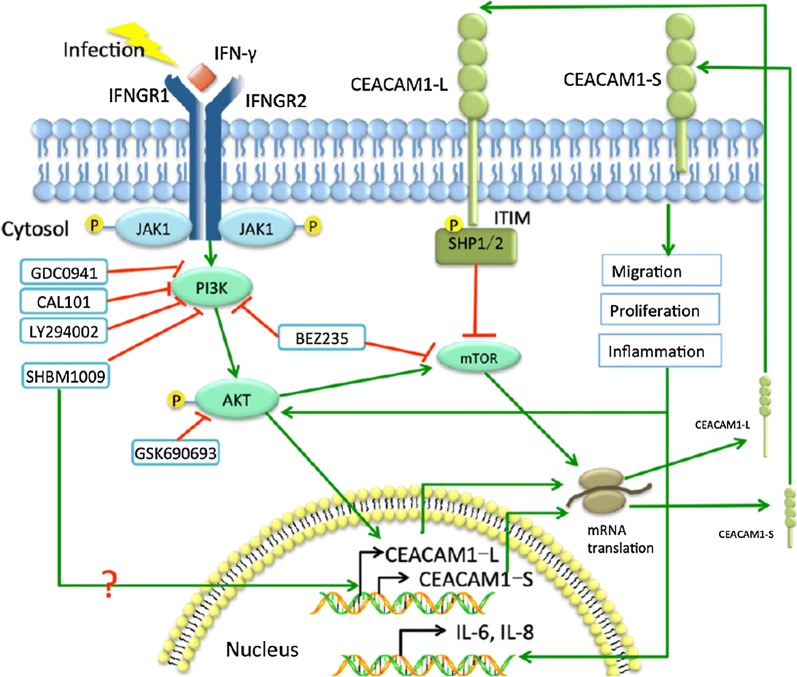Fig. 6.
Potential mechanism of CEACAM1 and PI3K interactions. In the infectious environment during acute exacerbation of COPD, the increased IFN-γ up-regulated the expression of CEACAM1, especially the -S isoforms, which further promotes cellular migration, proliferation and induces the production of inflammatory factors such as IL-6 and IL-8. The -L isoforms of CEACAM1 contains two ITIMs in the cytoplasmic tail, which negatively regulates down-stream signal transduction pathways. PI3K/Akt pathway inhibitors (GDC0941, CAL101, LY294002, SHBM1009, BEZ235 and GSK69063) inhibited CAECAM1 expression, which suggested that PI3K/Akt pathway induces the up-regulation of CEACAM1 after IFN-γ stimulation. Different from other PI3K/Akt pathway inhibitors, SHBM1009 could specifically up regulate CEACAM1-L isoforms. As a positive feedback, CEACAM1 promoted the activation of PI3K/Akt pathway

